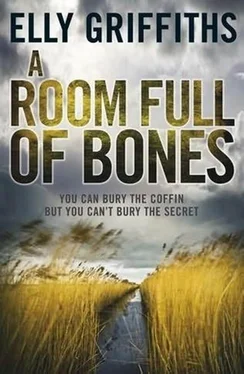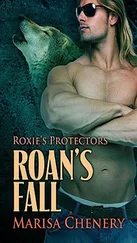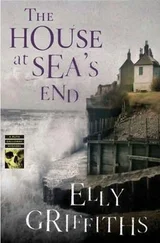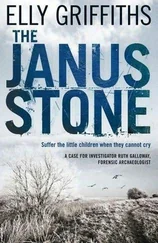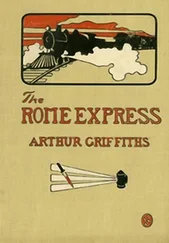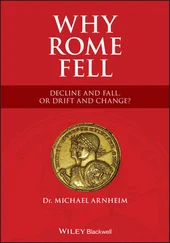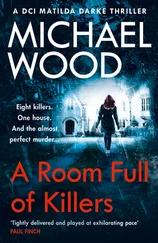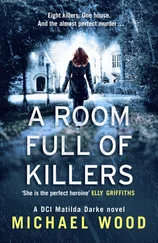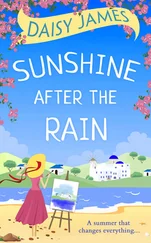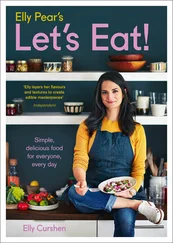Come and meet her, she is about to say. Come back to the house when we’ve finished discussing skulls and bones. We can walk on the beach and look at Kate and talk about life. But at that moment Cathbad claps his hands importantly.
‘Let’s go into the main hall now, friends. The first session is about to start.’
The first session, entitled ‘Honouring Our Ancient Dead’, is more interesting than Ruth had expected. She is shocked to discover that as recently as 2003 working parties were advising that human remains should not be returned to their country of origin because of doubts about their ‘care and preservation’. She learns that in 2005 three hundred and eighty-five sets of Aboriginal remains were held in eighteen different institutions around Britain. ‘Many of these relics,’ says the speaker, a woman called Alkira Jones, ‘were taken from their indigenous homelands through blatant acts of colonialism.’ Ruth thinks of Danforth Smith (now deceased)… the old man had the idea that the Abos were put together differently from us, that they were linked to cave men or some such. So he started collecting bones . She learns about the Native American Graves Protection and Repatriation Act 1990, passed in an attempt to resolve conflict over the storage of Native American skeletal remains and grave goods. Israel also recently passed a reburial act which could affect the remains of some of the oldest anatomically modern humans. In Scotland there is an ancient ‘right to sepulchre’ – a right to be buried – a principle which may now be adopted by other countries. ‘Museums hold on to these remains,’ says Jones, ‘because they say they add to the sum of human knowledge while, in fact, they add to the sum of human misery. Our relationship must be with the living descendants of these people. A living relationship, not a dead one.’
Ruth shifts uncomfortably in her seat. As a forensic archaeologist, many of her relationships are with the dead. Hasn’t she often marvelled at how much we can learn from a bone or tooth? Should she forgo that knowledge in order to ensure that the remains receive a proper burial? Does it matter, after all? It matters to the living, Jones is saying, and that’s the important thing. But is it? Ruth knows that some of the groups who have been demanding the return of Indigenous Australian relics are not in fact descended from the same tribes. The policy of the Australian Institute of Aboriginal Studies says that ‘descent must be shown’. But what if it can’t be proved? Can just anyone demand the return of bones which could contain valuable information for generations to come?
She remembers a Victorian painting that had fascinated her as a child. It was called Can These Dry Bones Live? and showed a woman, wearing a black shawl and a rather sumptuous red skirt, leaning on a gravestone and looking at some bones and a skull that have been unearthed by… who? What? A careless gravedigger? Animals? A very localised earthquake? The picture is sometimes said to represent Victorian doubts about the existence of an afterlife. If so, there are hints in the painting that might reassure the observer. The gravestone belongs to ‘John Faithful’ and bears the inscription, ‘I am the Resurrection and the Life.’ A nearby stone is engraved ‘Resurgam.’ A blue butterfly rests on the skull; elsewhere in the picture flowers are springing into bloom. But, for Ruth, the painting pointed to a different lesson. What could these bones tell us about the life that their owner lived? How can dry bones recall life in all its glorious complexity? She wonders now if the picture, like the Horniman Museum, influenced her choice of career. Or maybe she just liked the red skirt – an odd choice, surely, for a woman in mourning? But now these people are telling her that the bones should have stayed buried. It’s all very confusing.
The next session, a canter through Indigenous arte-facts kept in British museums, is more boring. Ruth dozes and wonders what Kate is doing. Sandra is good at making the day interesting, she’ll probably take Kate to the park, maybe do some baking with her. All the same, Ruth enjoys her own Saturdays with Kate. They usually go to the beach and collect shells. There’s a whole line of them in the garden like something from Mary Mary Quite Contrary. Sometimes they’ll go to Blakeney to see the fishing boats and often end up having tea in Cathbad’s purple caravan. Kate has her own dreamcatcher, glittering oyster shells and pink feathers. So far it hasn’t succeeded in making her sleep any better. Maybe tonight Ruth will try to go straight downstairs after reading the story…
She starts, pink feathers and oyster shells scattering. The speaker, a man called Derel Assinewai, is talking about the worst atrocities of colonial trophy hunters. ‘We’ve heard of Aboriginal people being hunted, literally being hunted like animals. There are rumours that these skulls were then scalped. It was the British, not the Native Americans, who were the first to scalp their victims – and then keep the skin as a souvenir.’
Ruth thinks of the telltale marks on the skull in the Smith Museum. Was she right to tell Cathbad and Bob? She can’t help feeling uneasy about the fact that, the day after this revelation, Lord Smith was dead. It’s not that she suspects Cathbad or Bob. She looks over at Bob now and he smiles at her. He is sitting in the back row, very much at his ease, legs crossed, head back, listening to Derel’s lecture. No, Danforth Smith’s death can only have been coincidence, but even so it makes her feel glad that she hasn’t got any Aboriginal remains lying around the house. Think how much worse it is to take the very bones of our ancestors and keep them on the other side of the world .
Why had Danforth Smith been so determined not to return the skulls? They weren’t even on display anymore. And although he had seemed proud of the gruesome collection, Ruth could not see that he got much pleasure from the museum as a whole. That day (was it only last week?) when she had examined the bones, Lord Smith had seemed tired, almost frightened, and the museum itself had seemed a sad place, dusty and forlorn. Ruth can’t see it ever opening again. Who would trek down a side street full of office blocks just to look at a few stuffed animals? No, better to let the place die with Neil Topham and Danforth Smith and quietly return the skulls to Australia. In any case, Ruth has done her bit. She has written a report, stating the bones are not being kept in appropriate conditions, and has submitted it to the Department for Culture, Media and Sport. She hopes this might encourage the authorities to put pressure on the Smith family to return them. But the truth is that, as the relics are privately owned, government has little or no influence. It’s as if Lord Smith really did own them, body and soul. But who owns them now? Smith had a son, she knows. Will he be the new Lord Smith?
Lunch, from a local vegan restaurant, is absolutely delicious. It’s such a lovely day that the French windows are open onto the garden and Ruth and Max sit on a stone seat with Claudia panting at their feet. It is only a few minutes before Cathbad comes up, accompanied by a dark woman in a red dress.
‘Max. Good to see you. Ruth, I’d like you to meet Caroline Smith.’
Ruth jumps up, brushing crumbs off her trousers. Caroline is a good-looking woman of about thirty. There is something oddly old-fashioned about her. Just as Cathbad often looks as if he is wearing fancy dress when he isn’t, Caroline somehow gives the impression of being in period clothing. Her hair is scraped up in a bun and the dress, an unfashionable ankle length, could be Edwardian or even Victorian. Funnily enough, it reminds Ruth of the skirt in Can These Dry Bones Live? She supposes that Caroline, like the painting’s subject, is also in mourning.
Читать дальше
